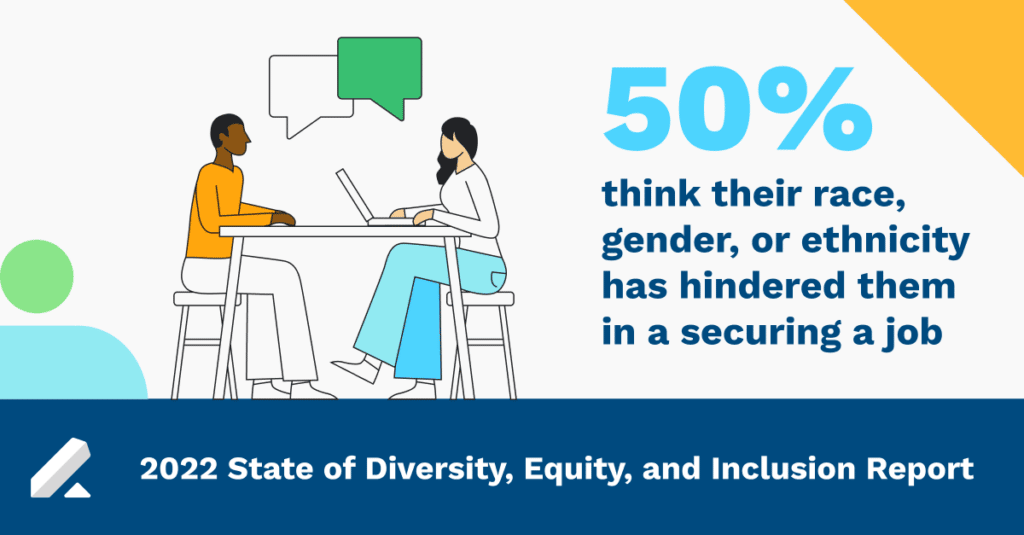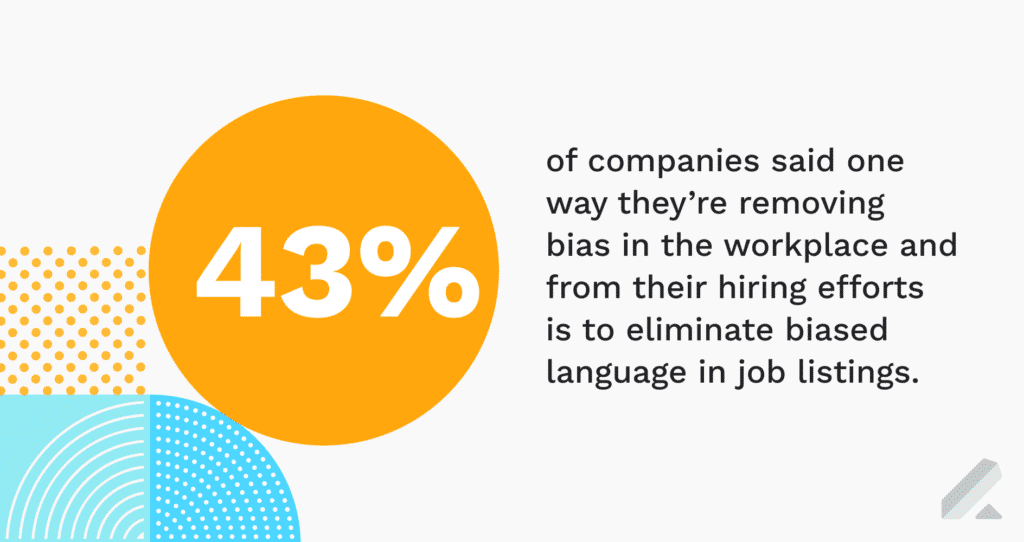“Gender bias [in the workplace] holds women back from being hired and advancing in their careers,” said Sheryl Sandberg & Dave Goldberg Family Foundation VP of People and Managing Director Raena Saddler.” “It’s important to be aware of how that manifests.”
That’s why Raena and the nonprofit created a digital program that helps you combat gender bias at work called 50 Ways to Fight Bias, the digital versions of which are free.
This resource is helpful for CHROs and other executives who want to eliminate bias from their organizations and built a truly diverse, equitable and inclusive culture.
That said, it’s critical to know the root causes of gender bias in the workplace and what you and other leaders across your business can do to ensure everyone — men, women and nonbinary individuals — is treated fairly and with respect.

Examples of gender bias in the workplace
Many HR leaders recognize unconscious bias persists in various corners of their business and leads to system issues (e.g., ongoing and widening gender pay gap, poor hiring practices and decision-making due to affinity bias).
Diversity data helps them spot these biases, particularly as it pertains to their talent teams’ recruiting and hiring efforts (e.g., diversity of advanced and hired candidates).
Awareness of unconscious biases is great.
However, addressing unconscious bias (i.e., reducing bias) and build a truly diverse and inclusive work environment is what will actually make employees happy and lead to a strong company culture.
Some examples of unconscious gender bias in the workplace still seen at some orgs today as it relates to male, female and nonbinary job seekers and employees include:
- A hiring committee favoring male candidates over female prospects who have very similar (if not the exact same) experience to their male counterparts
- A hiring team overlooking a woman for a high-profile role or project because they think it would be too much responsibility after recently having a baby
- An individual from another department incorrectly assumes a man on their team is the leader of the business unit due to supposed decisive, strong behavior
- Your hiring committee rules out a woman of color because she’s not a good culture fit. Ask them to be more specific, and point out that “different” can be a culture add.
- Someone complains that a new dad is taking too much of his family leave. Counter by saying that family leave is good for workers, families, and companies. Remind them that no one should be forced to choose between being a good employee and a good parent.
- A colleague asks a woman to pick up food for an office gathering, even though that’s not her job. Suggest a solution that distributes the work more fairly, like a potluck or a team rotation.
It’s important to consider intersectionality in each of these scenarios as well. Women and men experience biases based on other aspects of their identity, such as race and sexuality.
A few surprising stats around unconscious bias in the workplace from the Lean In guide to be aware of and share with your teams so you can rectify any bad tendencies and habits include:
- When a woman’s name was replaced with a man’s name on a resume, evaluators were 60% more likely to say they would hire the applicant.
- When hiring managers believed a woman had children because “Parent-Teacher Association coordinator appeared on her resume, she was 79% less likely to be hired. If she was hired, she would be offered an average of $11,000 less in salary.
- For every 100 men promoted to manager, only 60 black women are promoted.
Ensure every candidate and employee is treated fairly and inclusively and understand how to assess and what to do when you see unconscious bias in action.

How to get started with gender bias training
It’s not enough for your C-suite and people manager to simply help teams throughout your organization understand when gender bias occurs.
Leaders at your business also need to enable employees at your business to overcome them. Lean In’s unconscious bias guide is a great place to start.
Here are a few ways you can use them:
Company-wide training
The activity is broken into four sets, and each takes between 1-2 hours to complete. Lean In suggests breaking into mixed-gender groups of 6-8 people to go through each set. You could do this over several weeks, or aim to do one per quarter.
Interviewer training
There are scenarios specific to hiring within each set. Pick those out to review with your interview panel prior to your recruitment process. This can help you accomplish a more equitable hiring process.
Meetings with leadership
Before a review cycle, hold a training with your managers and company leadership prior to your annual review cycle. Pay specific attention to the “reviews and promotions” cards.
Addressing ongoing issues
There are many common, every day scenarios in the activity, such as women’s ideas being ignored in meetings. Reference this resource when you come across such a scenario, so you know how to respond the next time it happens.
Next steps to help you and your business combat gender bias in the workplace
According to Lean In and McKinsey & Company research, 64% of women have experienced micro-aggressions in the workplace. As Lean In states on its website:
“For the last four years, companies have reported that they are highly committed to gender diversity. But that commitment has not translated into meaningful progress. Women continue to be vastly underrepresented.”
Unconscious gender bias training needs to go beyond recognizing bias, and actually provide ways to combat it. Lean In’s 50 Ways to Fight Bias is a terrific, free resource to enable organizations to create a more inclusive workplace.
Is DEI (finally) a key focus at your company? Download our Essential Guide to Diversity, Equity and Inclusion to learn what measures your business should take today.



